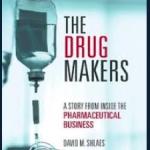Last week, a small, publicly held antibiotic biotech, Nabriva, announced that it would wind down its operations. Everyone still there lost their jobs.
bacterial resistance
This is not the MRSA pandemic, ladies and gentlemen. Let's take a look at the MRSA pandemic. In US hospitals, even today (latest CDC data is from 2014), 46% of S.
The key problem for many struggling with the treatment of resistant infections and a paltry pipeline of new antibiotics has been the lack of a return on investment for companies trying to discover and develop new antibiotics. In hospi
This is antibiotic awareness week. To mark this week, there has been a great deal of talk and the publication of several important papers and workshops on antibiotics and resistance.
American Council advisor, and infectious disease expert Dr. David Shlaes has been writing a blog called "Antibiotics—the Perfect Storm" since 2009.
We at ACSH have been beating this drum for years: The world is gettin
At ACSH, we probably spend more time debunking phony or overb
Bacterial resistance is a devastating problem for healthcare even now, especially in hospitalized pat






